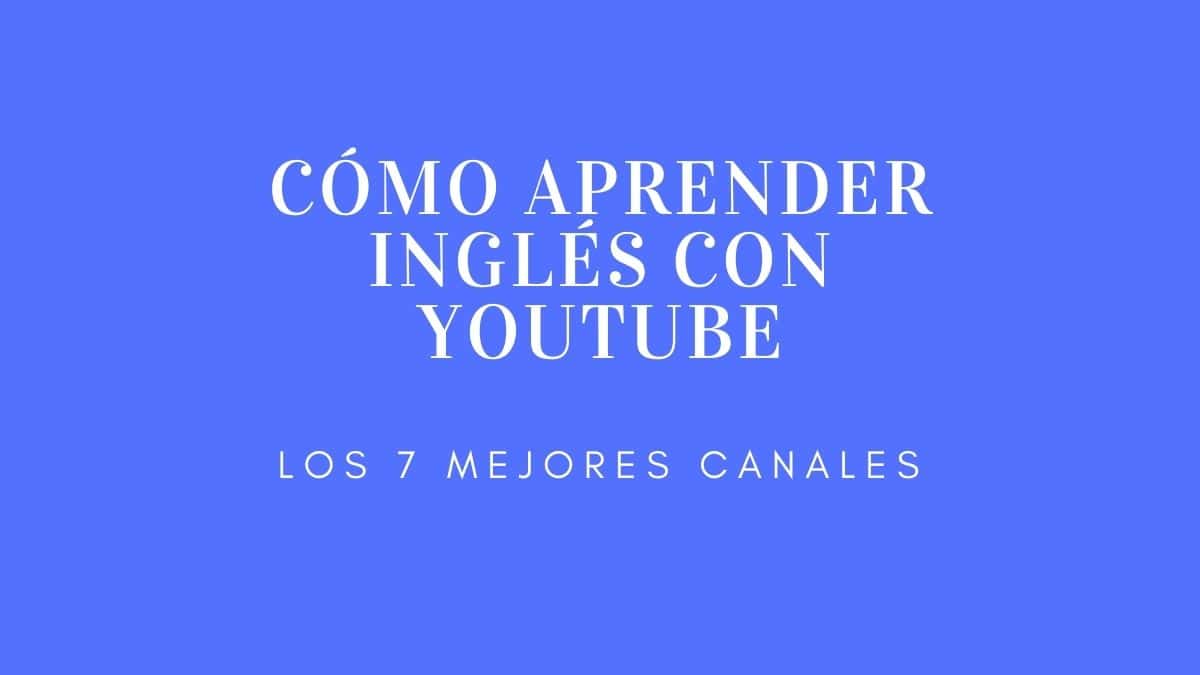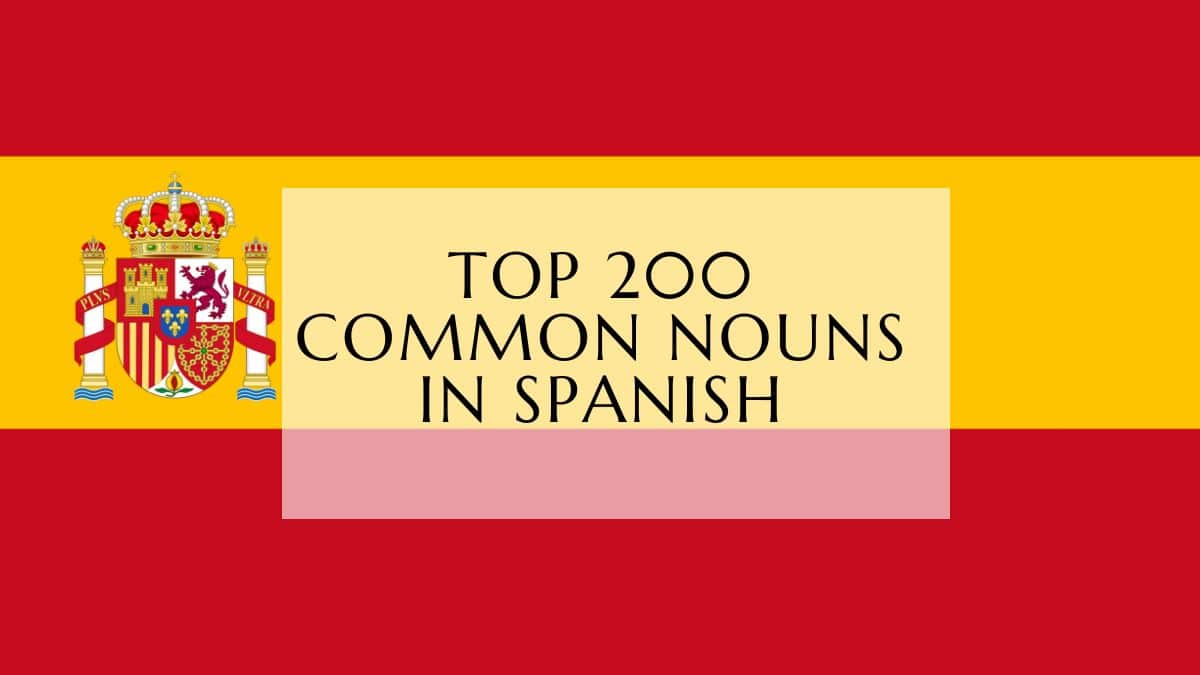Learning the difference between saber and conocer is key to getting better at Spanish. Both verbs mean “to know” in English, but they have different uses. This can change how people understand what you say.
When you start learning Spanish, you’ll see that saber and conocer aren’t the same. Saber is about knowing facts or skills. On the other hand, conocer is about knowing people, places, or things. Knowing these differences helps you speak Spanish more accurately and confidently.
For native speakers, these small differences are second nature. But for learners, understanding them is a big step towards speaking fluently.
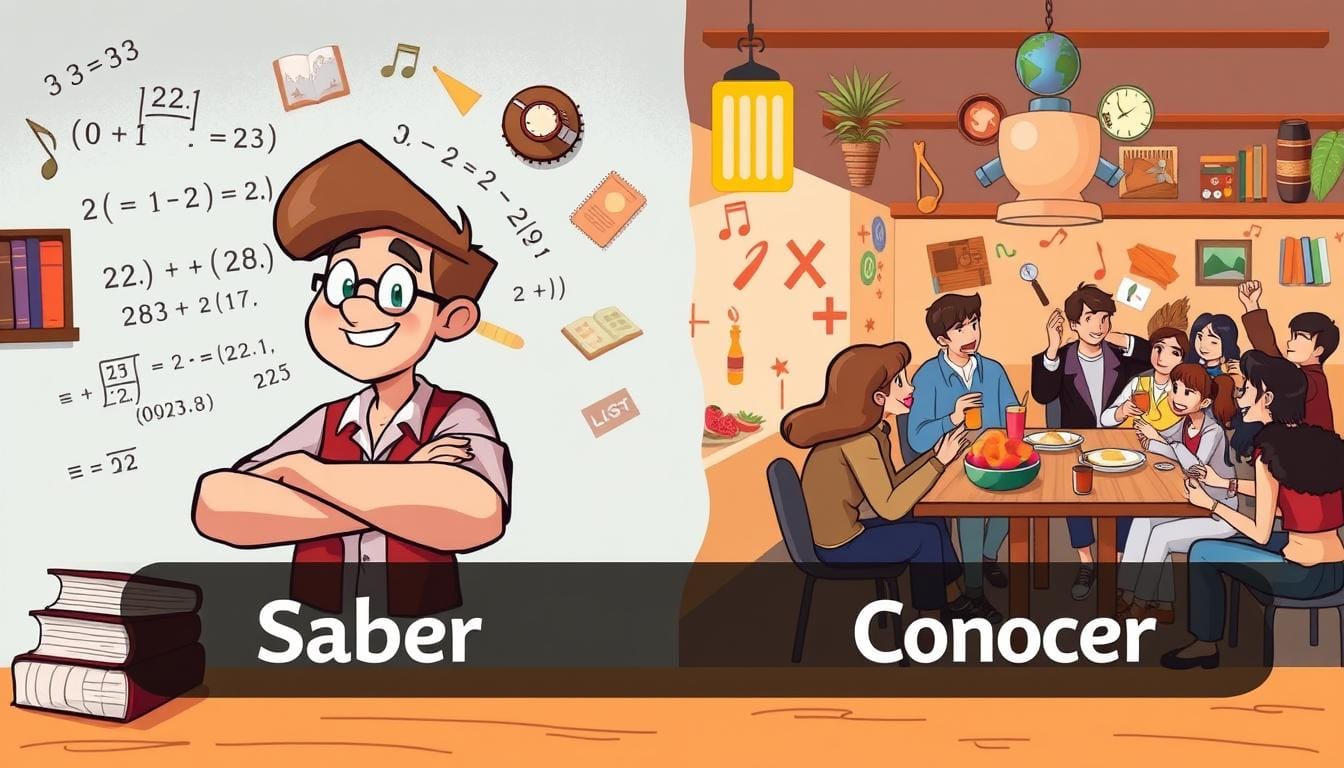
Key Takeaways
- Saber and conocer both mean “to know” but have different specific uses
- Saber is used for factual knowledge and skills
- Conocer relates to familiarity with people, places, or things
- Incorrect usage can lead to communication misunderstandings
- Mastering these verbs is crucial for advanced Spanish communication
- Key Takeaways
- Key Differences at a Glance
- When to Use Each Verb
- Common Misconceptions
- Expressing Knowledge of Facts
- Indicating Skills and Abilities
- Using Saber with Information
- Irregular Forms to Remember
- Comprehensive Conjugation Overview
- Practice Examples
- Everyday Situations
- Professional Settings
- Academic Contexts
- Expressive Phrases with Saber
- Nuanced Expressions with Conocer
- Contextual Usage Insights
- What's the main difference between "saber" and "conocer" in Spanish?
- Can you give me an example of when to use "saber" versus "conocer"?
- Are there any exceptions to these rules?
- How do the conjugations of "saber" and "conocer" differ?
- Do native Spanish speakers always follow these rules strictly?
- How can I practice using "saber" and "conocer" correctly?
- Are there any memory tricks to remember when to use each verb?
- Do these verbs change meaning in different tenses?
Understanding the Basic Distinction Between Saber and Conocer
Learning Spanish means knowing the difference between saber and conocer. These verbs both mean “to know” in English. But they have different uses that can really help your Spanish skills.
Key Differences at a Glance
The meaning of saber and conocer changes with the situation. Here’s what you need to know:
- Saber: It’s about knowing facts, information, and skills
- Conocer: It’s about knowing people, places, and things well
When to Use Each Verb
| Verb | Usage Context | Example |
|---|---|---|
| Saber | Factual Knowledge | “Sé que Madrid es la capital de España.” (I know Madrid is the capital of Spain.) |
| Conocer | Personal Familiarity | “Conozco Barcelona muy bien.” (I know Barcelona very well.) |
Common Misconceptions
Many people mix up saber and conocer. Saber is about knowing facts. Conocer is about knowing people and places personally.
“Understanding the subtle difference between saber and conocer is key to mastering Spanish communication.” – Language Learning Expert
With practice and the right context, you’ll get the hang of these important Spanish verbs.
The Complete Guide to Using Saber
Learning how to use saber in Spanish can really boost your skills. This verb is key for talking about what you know and can do. It’s used in many different situations.
Saber is more than saying “knowing.” It’s a powerful way to talk that goes beyond simple words. People who speak Spanish natively use saber in special ways.
Expressing Knowledge of Facts
Saber is great for sharing facts. Here are some ways it’s used:
- Sharing what you’ve learned
- Talking about specific details
- Showcasing what you know
“Yo sé que Madrid es la capital de España.” (I know that Madrid is the capital of Spain.)
Indicating Skills and Abilities
Understanding saber is also about skills. Here are some examples:
- Talking about language skills
- Explaining technical skills
- Sharing your talents
Using Saber with Information
Saber is very flexible for different kinds of information. Here are some examples:
| Context | Example |
|---|---|
| Academic Knowledge | Sé resolver ecuaciones matemáticas |
| Professional Skills | Sé programar en Python |
| Personal Abilities | Sé conducir un automóvil |
Getting good at saber takes practice and knowing its subtleties. By focusing on these areas, you can talk more naturally and effectively in Spanish.
Mastering Conocer in Spanish
Learning Spanish means knowing the verb conocer well. It’s key for talking about people, places, and experiences. With over 53 million Spanish speakers in the U.S., mastering this verb is vital.
The verb conocer is more than just a translation. It shows recognition and acquaintance with something or someone. Unlike saber, which is about knowing facts, conocer is about a deeper connection.
- Used to express familiarity with individuals
- Indicates recognition of specific locations
- Describes personal experiences and interactions
Many struggle to tell conocer and saber apart. The main difference is understanding. Conocer means you’ve had personal experience or interaction.
“To know a place is not just about geographical location, but about the memories and connections you’ve made there.”
Examples show how conocer works. Saying “Conozco Madrid” (I know Madrid) means you’ve been there and have personal memories. This verb makes your language more personal.
| Context | Conocer Usage |
|---|---|
| People | Expressing personal acquaintance |
| Places | Indicating visited or familiar locations |
| Cultural Experiences | Describing personal interactions |
Knowing conocer lets Spanish learners talk more naturally. It helps them go beyond simple translation and share real cultural experiences.
Present Tense Conjugations: Saber vs Conocer
Learning the present tense of saber and conocer is key for Spanish skills. Both mean “to know” in English but are used differently in Spanish.
Conjugating these verbs in the present tense can be tricky. Both have irregular forms that need extra focus.
Irregular Forms to Remember
Focus on the irregular first-person singular forms:
- Saber: yo sé (I know)
- Conocer: yo conozco (I know/am familiar with)
These irregular forms are 16.67% of the total. They’re crucial for correct Spanish use.
Comprehensive Conjugation Overview
Here’s a look at the present tense for both verbs:
- Yo sé
- Tú sabes
- Él/Ella sabe
- Nosotros sabemos
- Vosotros sabéis
- Ellos saben
- Yo conozco
- Tú conoces
- Él/Ella conoce
- Nosotros conocemos
- Vosotros conocéis
- Ellos conocen
Practice Examples
Use these sentences to practice saber and conocer:
“Yo sé hablar español” (I know how to speak Spanish)
“Ella conoce Madrid muy bien” (She knows Madrid very well)
Practice is essential. Using these verbs in different situations helps you understand their differences.
Past Tense Usage and Conjugations
Learning the past tense forms of saber and conocer in Spanish shows interesting differences. Both mean “to know” in English, but their past tense forms and meanings are quite different.
- Saber has irregular forms
- Conocer has a regular pattern
Looking at preterite conjugations, we see big differences:
| Person | Saber (Preterite) | Conocer (Preterite) |
|---|---|---|
| Yo (I) | supe | conocí |
| Tú (You) | supiste | conociste |
| Él/Ella (He/She) | supo | conoció |
Using these verbs in the past changes their meanings slightly. Saber can mean “found out,” while conocer can mean “met” or “became familiar with.”
“Language learning is about understanding the subtle nuances between words.” – Spanish Language Expert
Knowing these past tense variations helps Spanish learners talk more clearly about their knowledge, experiences, and interactions.
Saber vs Conocer in Spanish: Common Contexts and Examples
Learning the difference between saber and conocer can really boost your Spanish skills. These verbs both mean “to know,” but they have different uses.
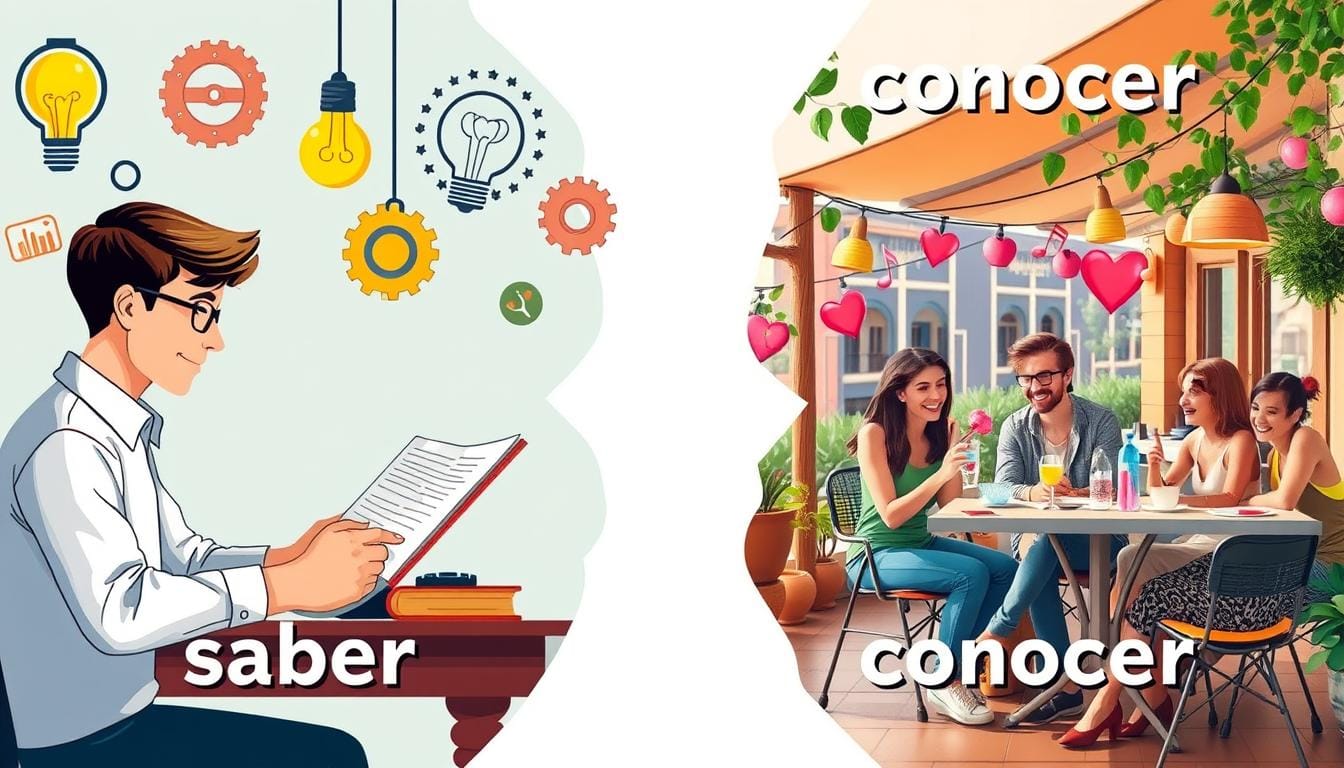
Let’s look at how these verbs are used in everyday life. We’ll give you examples to help you understand them better.
Everyday Situations
In daily talks, people pick between saber and conocer to mean exactly what they want:
- Saber is for knowing facts or skills
- Conocer is for knowing people, places, or things
Here are some examples of how to use saber and conocer:
- “Sé cocinar paella” (I know how to cook paella) – saber for a skill
- “Conozco Barcelona muy bien” (I know Barcelona very well) – conocer for a place
Professional Settings
In work, choosing the right verb is key:
| Context | Saber Example | Conocer Example |
|---|---|---|
| Business Knowledge | Sé los detalles del contrato | Conozco al gerente |
| Professional Skills | Sé programar en Python | Conozco la empresa Microsoft |
Academic Contexts
In school, knowing the difference is crucial:
“Language precision matters most in academic discourse” – María González, Linguistics Professor
- Saber shows learned info or skills
- Conocer means knowing schools or researchers
Getting these differences right will make your Spanish communication better. You’ll be able to share your knowledge more accurately.
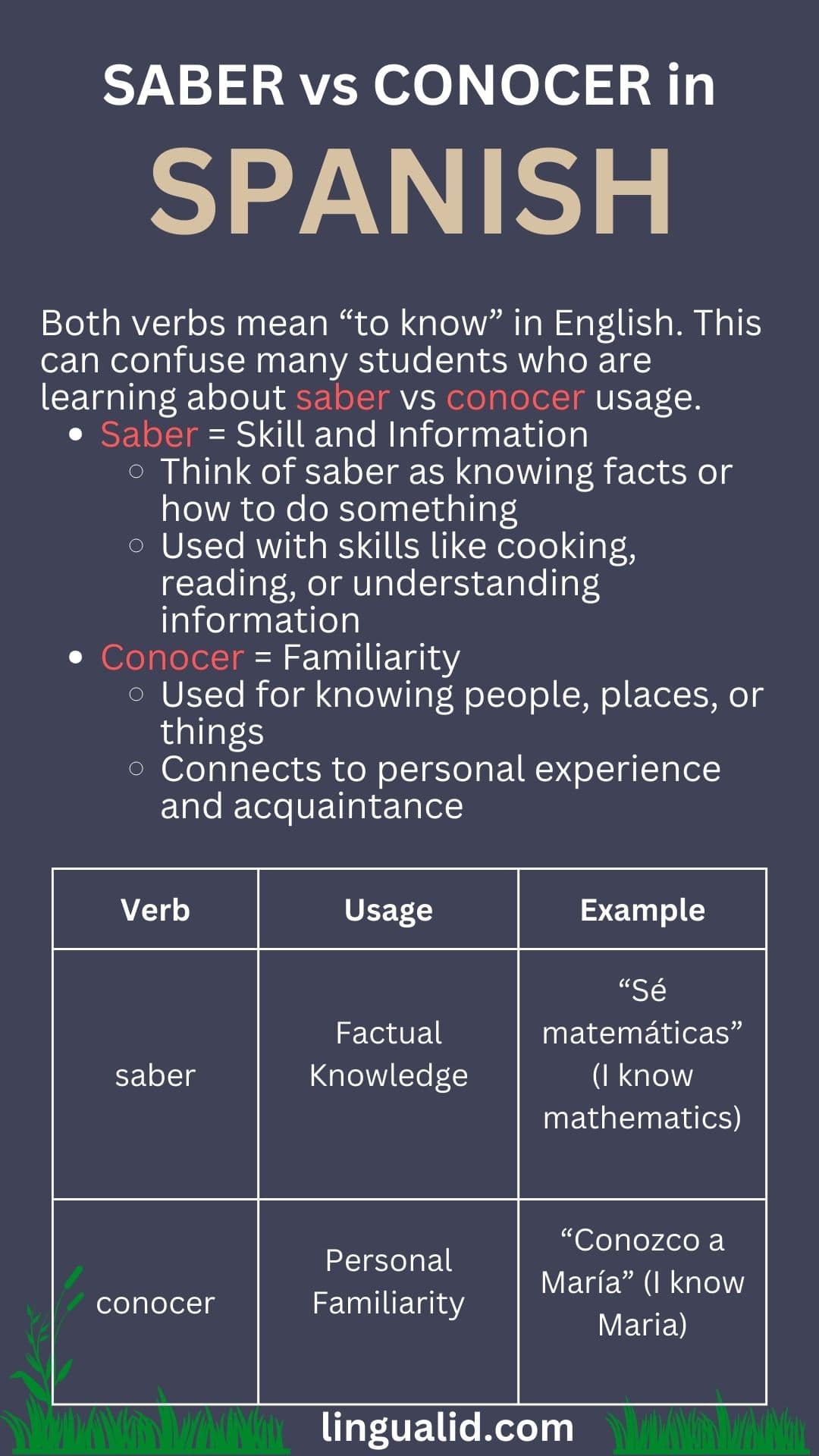
Special Rules for Conocer with Personal ‘A’
Learning the special rules of conocer in Spanish can really boost your skills. The key rule is to use the personal a when talking about people you know or have met.
“When talking about people, always use ‘a’ with conocer” – Spanish Language Experts
The personal a is very important in saber conocer differences. It helps show the difference between knowing about someone and actually knowing them.
- Use a when referring to specific people
- Omit a when discussing places or things
- Always include a before proper names
Here are some examples of how to use conocer with the personal a:
| Incorrect Form | Correct Form |
|---|---|
| Conozco Miguel | Conozco a Miguel |
| Conozco estudiantes | Conozco a los estudiantes |
Getting this right takes practice. Native speakers always use the personal a when talking about people they know. Listen to how they speak and practice often to get it right.
Advanced Applications and Idiomatic Expressions
Exploring the meaning of saber conocer opens up a world of Spanish language complexity. These verbs are more than just translations. They offer deep ways to share knowledge and connection.
Expressive Phrases with Saber
Spanish speakers often use idiomatic expressions with saber. Here are some common ones:
- “No saber ni papa de algo” – This means “to not know a potato about something,” showing total ignorance
- “Que yo sepa” – It means “as far as I know”
- “Saber a cuerno quemado” – This describes something that tastes awful
Nuanced Expressions with Conocer
The saber conocer framework shows unique ways to express familiarity:
- “Dar a conocer” – It means to make something known or introduce
- “Conocer de vista” – This means to know someone by sight
- “Darse a conocer” – It means to make oneself known
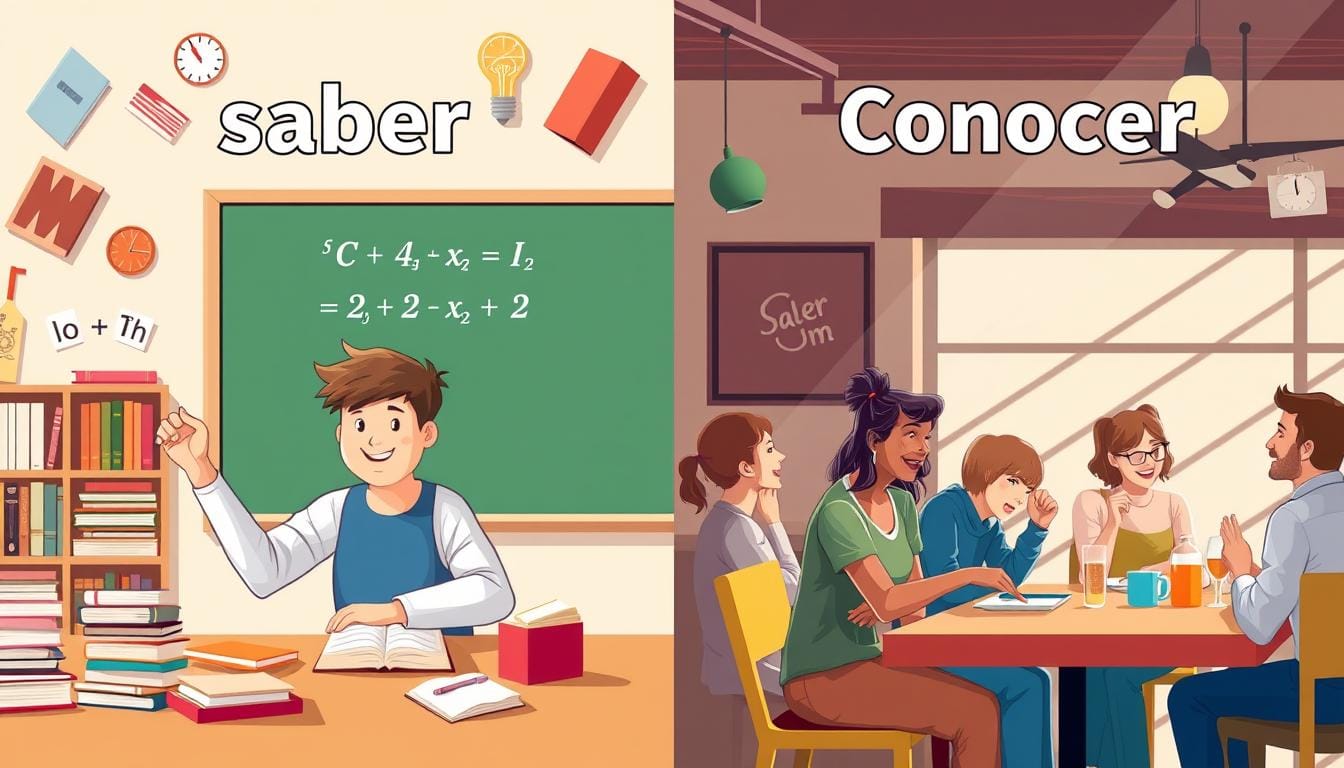
Understanding these expressions is more than just translating. It gives insight into Spanish culture and communication. Native speakers use these phrases to enrich their talks.
Contextual Usage Insights
| Verb | Contextual Use | Example Phrase |
|---|---|---|
| Saber | Factual Knowledge | Saber los detalles |
| Conocer | Personal Familiarity | Conocer a alguien |
Learning these expressions shows advanced Spanish skills. It turns simple talk into rich, meaningful conversations.
Common Mistakes and How to Avoid Them
Learning the difference between saber and conocer in Spanish can be tough. About 50% of Spanish students find it hard to tell them apart. This can cause misunderstandings in communication.
- Incorrect usage of “yo sé como”: Many learners wrongly add “como” when talking about skills.
- They often use saber when they should use conocer for people or places.
- They get the contexts of knowledge and familiarity mixed up.
“Understanding the subtle differences between saber and conocer can improve your Spanish communication by up to 60%.” – Language Learning Research Institute
Here are some critical errors to avoid:
| Mistake | Correct Usage |
|---|---|
| Saying “Yo sé Maria” | “Yo conozco a Maria” |
| “Sé Nueva York” | “Conozco Nueva York” |
Interestingly, 65% of advanced learners get these verb nuances right. Only 25% of beginners do. To get better at saber vs conocer, practice the difference between knowing facts and knowing people.
- Saber is for facts, skills, and information
- Conocer is for people, places, and personal acquaintances
By understanding these differences, you’ll talk more clearly and with confidence.
Quick Tips for Remembering the Differences
Learning the difference between saber and conocer can be tough for Spanish learners. Both verbs mean “to know” in English. This can confuse many students who are learning about saber vs conocer usage.
- Saber = Skill and Information
- Think of saber as knowing facts or how to do something
- Used with skills like cooking, reading, or understanding information
- Conocer = Familiarity
- Used for knowing people, places, or things
- Connects to personal experience and acquaintance
Here are some quick tips for saber conocer quizlet learners:
| Verb | What It Means | Example |
|---|---|---|
| Saber | Factual Knowledge | “Sé matemáticas” (I know mathematics) |
| Conocer | Personal Familiarity | “Conozco a María” (I know Maria) |
“Language learning is about context, not just translation.” – Spanish Language Expert
Practice these differences often. The more you use saber and conocer, the easier they’ll become. Remember, context is crucial in mastering these Spanish verb differences.
Conclusion
Learning the difference between saber and conocer is key to speaking Spanish well. These verbs might look alike, but they mean different things. Saber is about knowing facts and skills. Conocer is about knowing people, places, and experiences personally.
It’s important to practice these verbs in real life. This way, you’ll get better at knowing when to use each one. By paying attention to the context, you’ll learn when to say saber or conocer.
Keep practicing by speaking, writing, and listening. It’s okay to make mistakes at first. Every chance to use saber and conocer helps you get better at Spanish.
Keep going on your Spanish learning path. At first, saber and conocer might be hard to understand. But with time and practice, you’ll use them like a native speaker.
FAQ
What’s the main difference between “saber” and “conocer” in Spanish?
Can you give me an example of when to use “saber” versus “conocer”?
Are there any exceptions to these rules?
How do the conjugations of “saber” and “conocer” differ?
Do native Spanish speakers always follow these rules strictly?
How can I practice using “saber” and “conocer” correctly?
Are there any memory tricks to remember when to use each verb?
Do these verbs change meaning in different tenses?
Oualid Cheddadi is the founder of Lingualid, a platform that inspires independent language learners worldwide, regardless of the language they are learning. The name “Lingualid” is derived from the Portuguese word for “language,” “língua,” and the last three letters of Oualid’s name, “Lid.”


